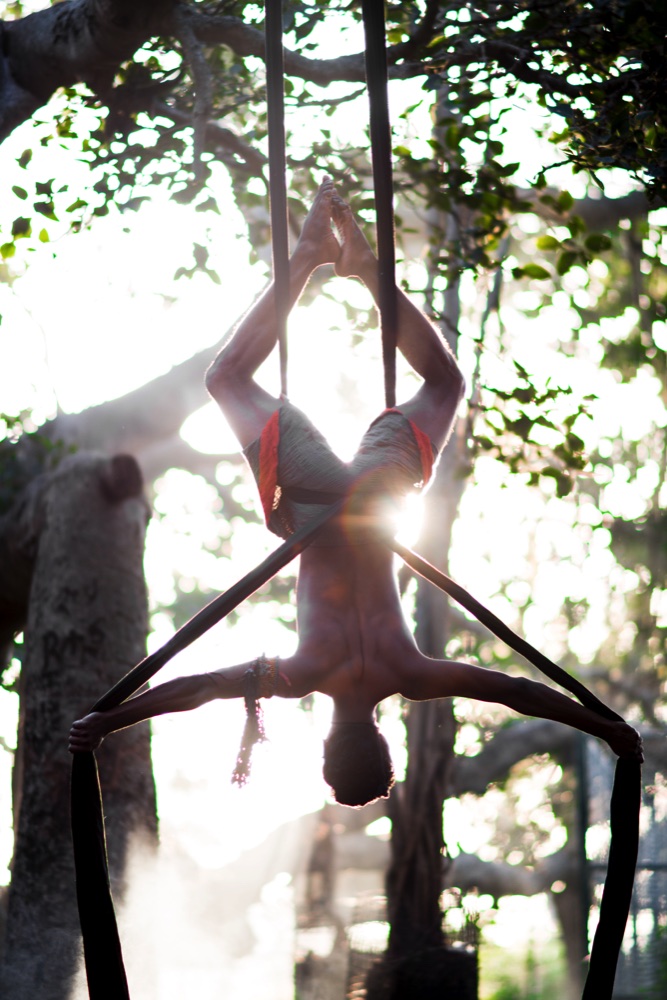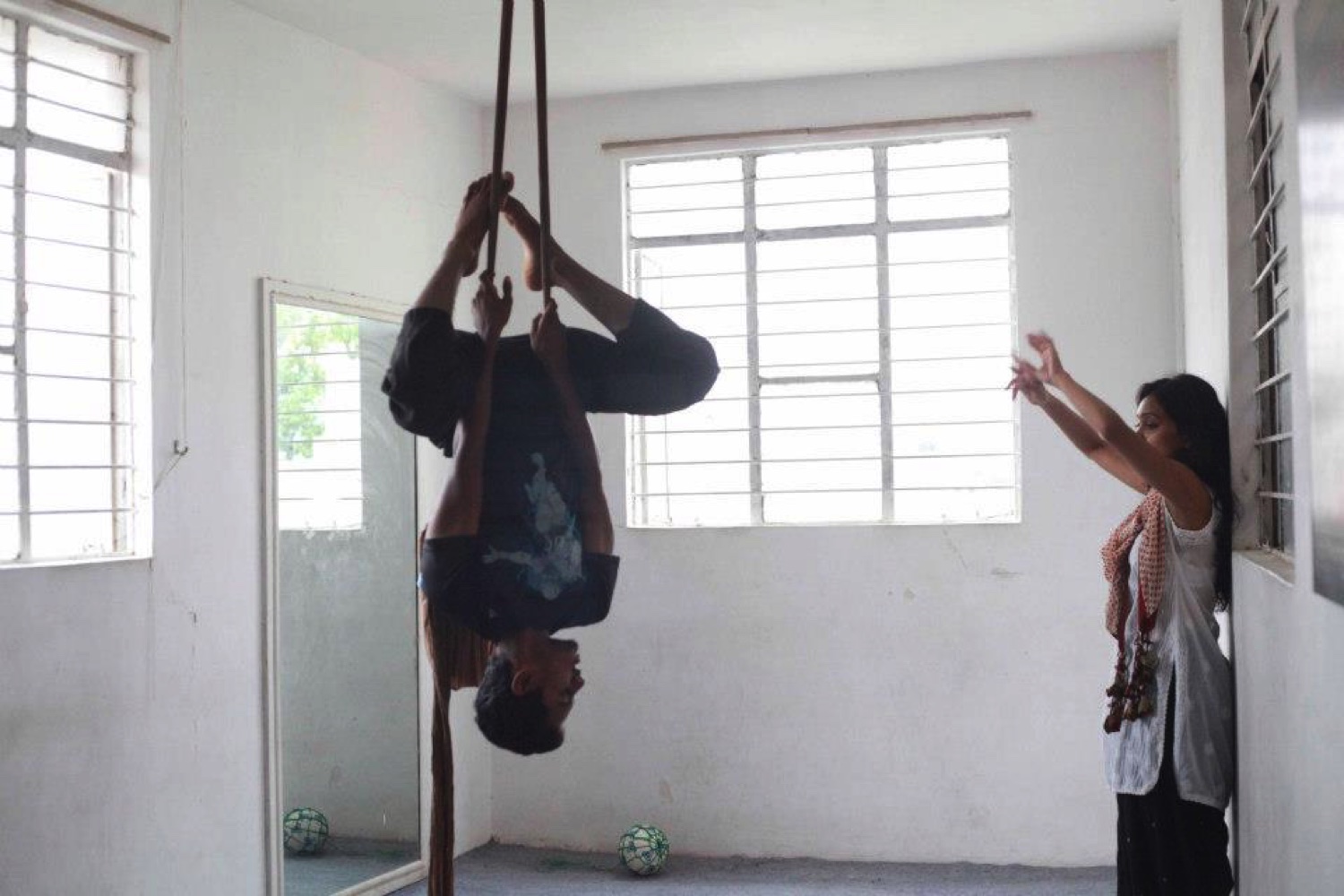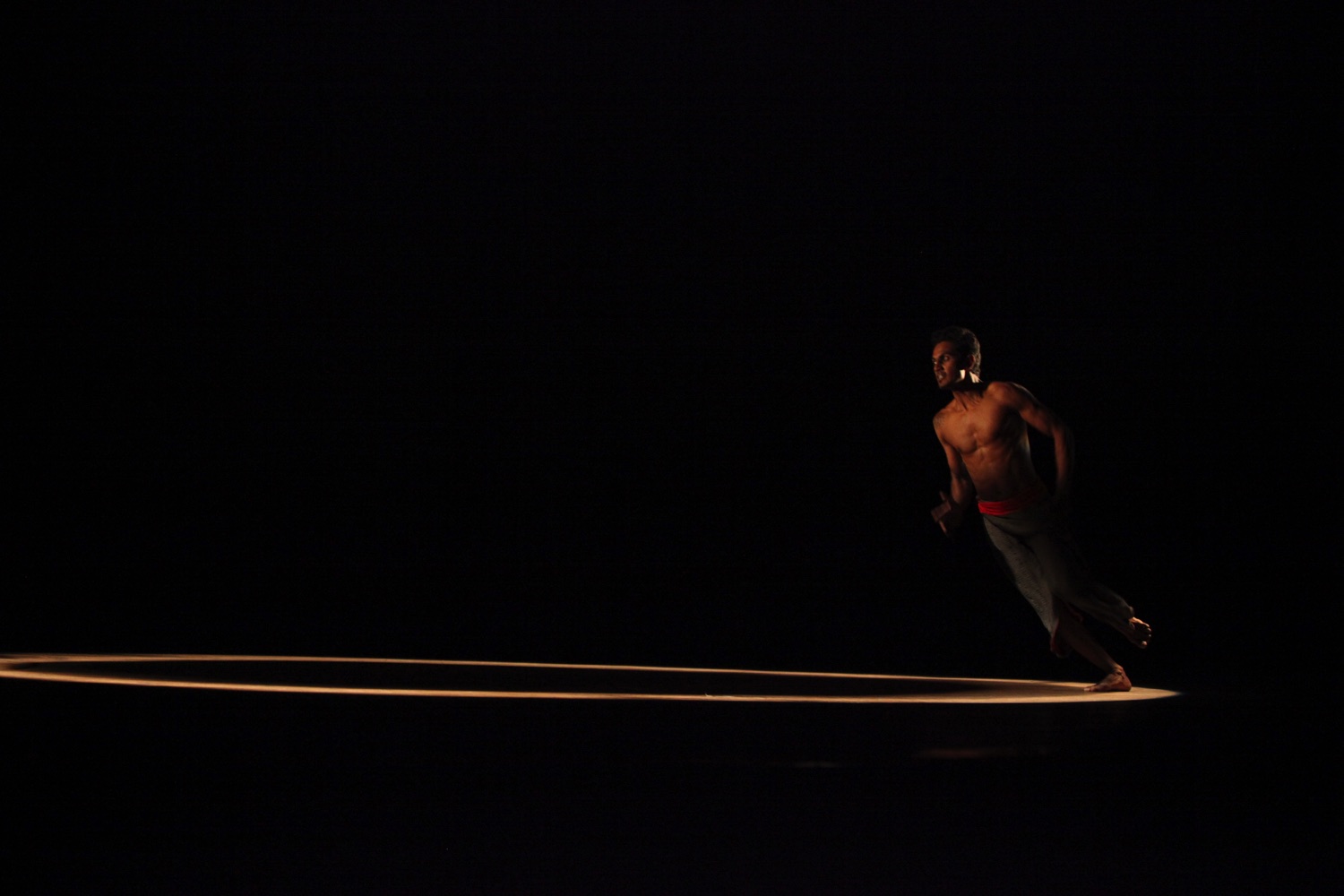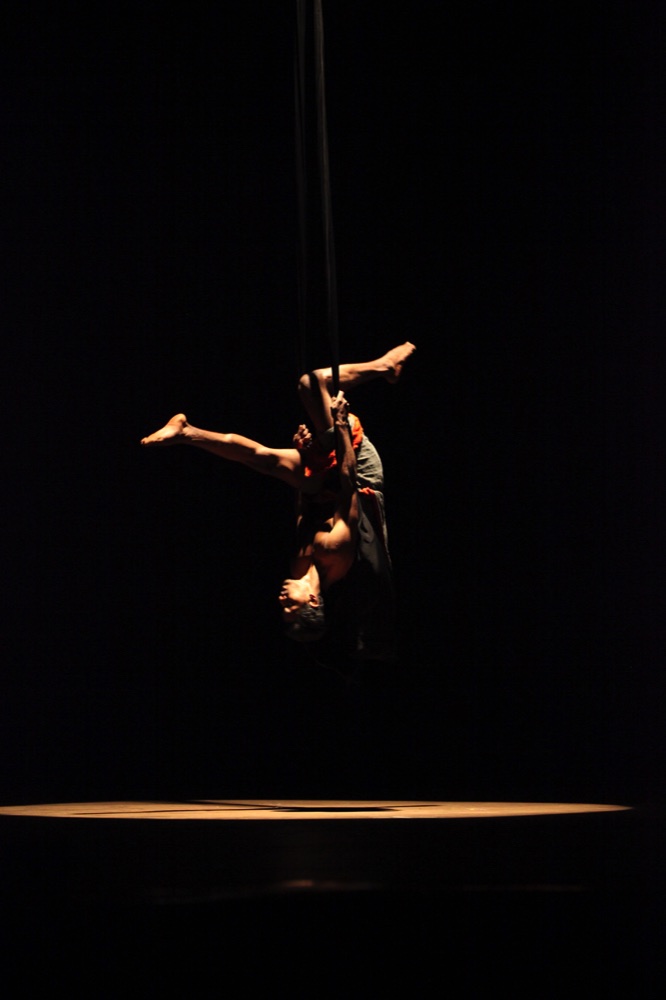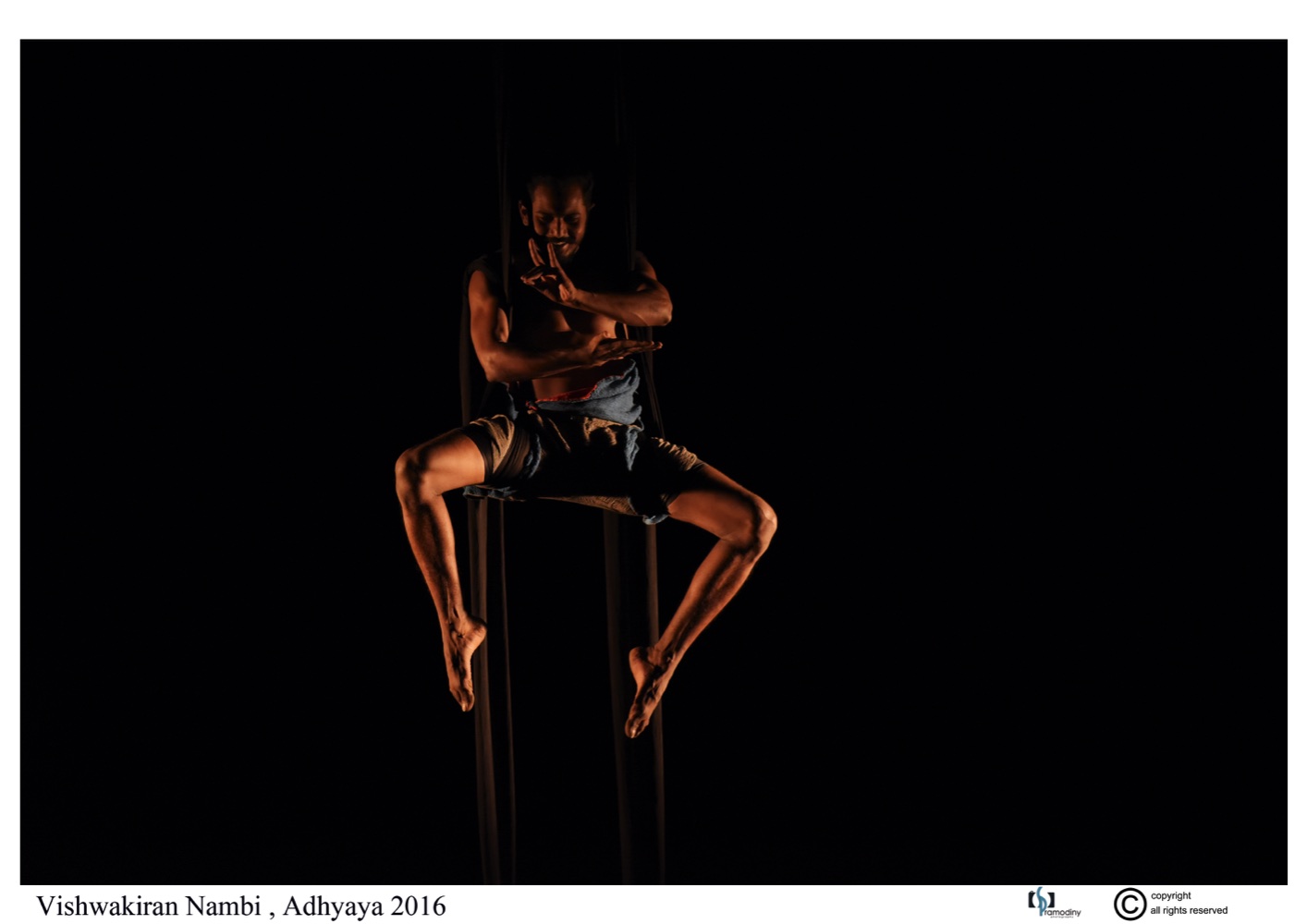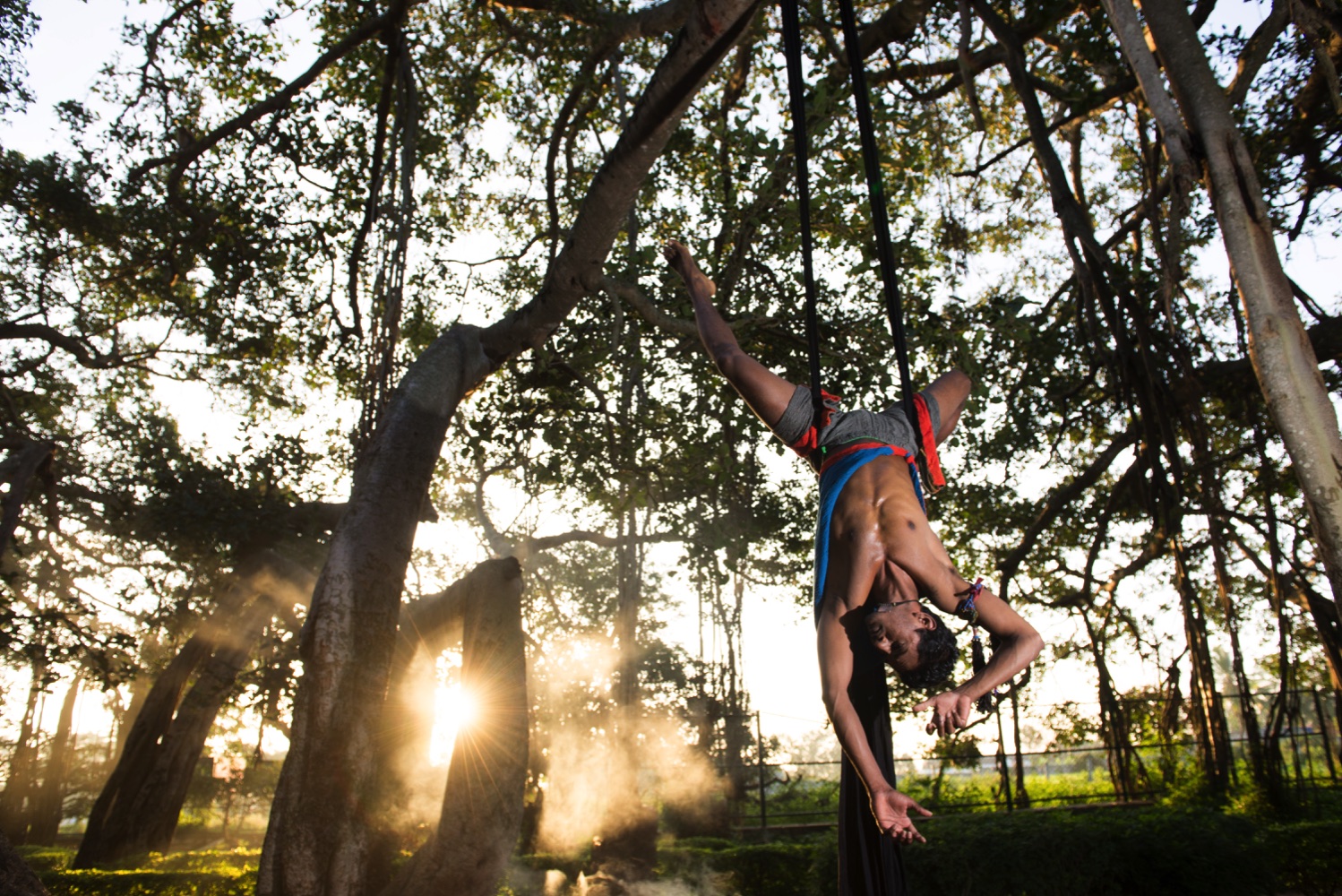Overview
Borrowing from its namesake mythological character caught between heaven and earth, Trishanku talks about the middleground or limbo between one’s goals or desires and one’s current state or possessions.
As legends go Trishanku, after being denied the passage to heaven by the sage Vasishtha, went to Guru Vishwamitra who agreed to perform the yagna and send him to heaven, on his way there the Gods refused his arrival and hence he was cursed to exist in a parallel zone between heaven and earth.
As the dancer hanging mid air on an aerial cloth portrays the sentiments, the piece becomes a personal journey of searching for the trishanku within us, talking about the internal struggle that today’s generation has about not belonging anywhere therefore drawing a parallel between the generation then and the generation now, which is impulsive, restless and reckless.
Danced around a circle of light symbolising no beginning and no end, the movement vocabulary stresses mainly on repetition, becoming a direct expression of the emotions experienced, taking us into an endless loop of images, which is very similar to the state of mind we all are in today. The piece uses the tool of travelling time and space through movements on the ground and mid air, bringing in a hypnotic trance-like element.
Details
Choreographer – Madhuri Upadhya
Bharatanatyam Section Choreography- Sri Kiran Subramanyam
Genre – Theatrical
Music- Raghu Dixit
Costume- Sonali Sattar & Himanshi Dimri (Hidden Harmony)
Property- Sridhar Murthy
Scale- 1
